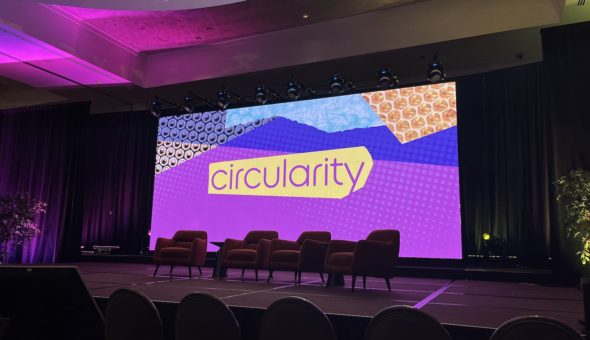Students from the University of Bath’s Mays and Ting groups, colloquially known as ‘Team Hydrogen’, recently attended the 7th International Workshop on Characterization of Porous Materials in Florida. CSCT students Leighton Holyfield and Jemma Rowlandson presented their work to leading porous materials scientists from around the world. This post was contributed by Leighton.
 Hundreds of the world’s finest porous materials scientists descended upon the warm and sunny climes of southern Florida for the Characterization of Porous Materials Workshop. The conference, held over four days, saw 46 oral and 84 poster presentations made, spanning a wide variety of concepts within porous materials science, from detailed analyses on whether current adsorption protocol is correct, to the synthesis of new materials such as MOFs and activated carbons, to new applications for standard materials. Certainly, there was a wealth of knowledge and experience, and being able to be a part of it was quite the experience.
Hundreds of the world’s finest porous materials scientists descended upon the warm and sunny climes of southern Florida for the Characterization of Porous Materials Workshop. The conference, held over four days, saw 46 oral and 84 poster presentations made, spanning a wide variety of concepts within porous materials science, from detailed analyses on whether current adsorption protocol is correct, to the synthesis of new materials such as MOFs and activated carbons, to new applications for standard materials. Certainly, there was a wealth of knowledge and experience, and being able to be a part of it was quite the experience.
Following an enjoyable first day in which registration and an evening gala were the only arranged affairs (allowing for enjoyment of the Florida sunshine and the Marriott hotel’s pool!), the science started on Day 2. Following an introduction from Alexander Neimark, the conference organiser, Bernt Smarsly gave a fascinating insight into the use of SAXS/SANS for the characterisation of micropores, and the conference was underway.
Talks of particular interest on day 2 were those of Jean Rouquerol, who discussed whether the accepted science of the ‘Gibbs excess amount’ is applied correctly, Phil Llewelyn, who compared MOFs for CO2 storage and developed metrics based on the results and Daniel Siderius, who presented the ever-evolving NIST database of known adsorbents.
Day 2 was finished with an evening poster session, in which both Jemma and I presented the findings from our MRes projects in our first year. Unfortunately, this was the only time dedicated to poster presentation, as it would have been nice to have more time to discuss our findings with the other attendees.
Also of great interest were the final three talks of day 4. These were given by Bath’s own Valeska Ting on Team Hydrogen’s work on hydrogen adsorption in activated carbons (particularly some neutron scattering work that appears to show hydrogen at solid-like densities in the adsorbed phase), and Bogdan Kuchta, who gave a general overview of hydrogen storage in microporous materials. The last lecture of the conference was given by Peter Pfeiffer, who gave a very interesting lecture on new activated carbons and hydrogen storage within these, showing storage densities in the adsorbed monolayer above that of liquid hydrogen.
After the closing of the conference, there was a tour of the Quantachrome facility up the road in Baton Rouge, and the evening was closed out with a boat trip, cruising up and down the Gulf Stream river to see all the multi-million dollar homes!
Ultimately, CPM-7 was a thoroughly worthwhile trip, as we learnt a lot, made new contacts for potential future collaborations, and had the opportunity to present our work to some of the leading porous materials scientists in the world. We came home eager to crack on with our work and await the next opportunity!
Leighton is currently in his second year of PhD working on designing safe hybrid hydrogen storage tanks with Dr Tim Mays and Dr Andrew Burrows
Respond


